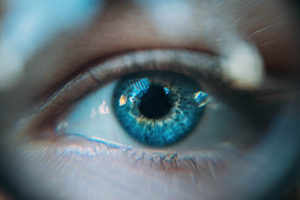
Year: 1999, 2009, and 2019
Market size:12,745; 17,178; and 28,402 respectively
A cornea is the transparent, dome-shaped layer at the front of the eye. It helps the eye focus light so a person can see clearly. If the cornea is damaged by injury or disease, a cornea transplant may be necessary to restore a person’s sight. Corneal blindness is a condition where the cornea is damaged but the rest of the eye functions properly. In the United States, the most common cause of corneal blindness in those that undergo a cornea transplant is advanced Fuchs’ dystrophy. This condition is characterized by fluid buildup in the cornea causing it to swell and thicken. Other conditions that can cause corneal blindness include keratoconus, infectious keratitis, and bullous keratopathy. In 2019, there were more than 136,000 whole eye and cornea donations to U.S. eye banks, 59% of which were procured from registered organ donors; the rest by authorization through the next of kin. A total of 85,601 cornea transplants were performed globally with donations from U.S. eye banks. More than 95% of cornea transplants are successful.
It’s estimated that up to 10 million people worldwide suffer from corneal blindness. In 2012, the last year for which data exists, there was one cornea available for every 70 needed.1 That year there were 184,576 corneal transplants performed in 116 countries. These corneas were procured from more than 283,000 donations in 82 countries. Today’s market size shows the number of corneas exported by the United States in 1999, 2009, and 2019 for use in corneal transplants performed internationally. The United States is the largest exporter of corneas in the world, followed by Sri Lanka, Italy, the Philippines, the Netherlands, the Czech Republic, France, Australia, and Colombia. Currently, the U.S. exports about a third of all cornea tissue recovered by eye banks in the country.
1 Artificial corneas have been used for more than 50 years, but it has been only recently that the devices have become reliably successful. For most patients, however, using donated corneal tissue is the best option. Artificial corneas may be used when the patient has had multiple previous cornea graft failures, or severe ocular surface disease, such as after chemical burns, or when the patient has Stevens-Johnson syndrome, limbal stem cell deficiency, congenital aniridia, or severe dry eyes.
National Donor Day is February 14. “National Donor Day is a time to focus on all types of donation – organ, eye, tissue, blood, platelets and marrow – by participating in blood/marrow drives or donor registration events. It is also a day to recognize our loved ones who have given the gift of donation, have received a donation, are currently waiting or did not receive an organ in time.” — Donate Life America
Sources: 2019 Eye Banking Statistical Report, Eye Bank Association of America, April 2020 available online here; Philippe Gain, MD, PhD, et. al., “Global Survey of Corneal Transplantation and Eye Banking,” JAMA Ophthalmology, December 3, 2015 available online here; Philippe Gain, MD, PhD, et. al. “Supplementary Online Content to the Global Survey of Corneal Transplantation and Eye Banking,” JAMA Ophthalmology, December 2015 available online here; “2019 Year in Review,” Eye Bank Association of America, April 2020 available online here; “Fuchs’ Dystrophy,” Mayo Clinic available online here; “Important Information About Cornea Donation,” Saving Sight available online here; “Artificial Cornea,” Cornea Research Foundation of America available online here.
Image source: Daniil Kuz̆elev, Untitled, Unsplash, August 1, 2017 available online here.
